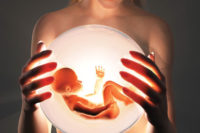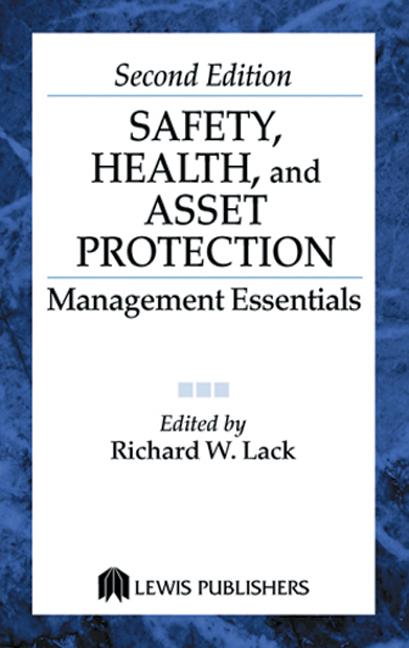OSHA’s modified hazard communication standard (HCS) mandates a highly controversial and divisive issue that was not addressed in the preamble. The issue may be the most important risk for chemical exposures. And the issue is something that OSHA most likely does not have the authority to regulate.
The term “unborn child” is the “hazard statement” that describes the classification of developmental toxicants (ref. C.4.10 FR pg. 17845). The lack of discussion on these words in the preamble may imply that everyone knows what “unborn child” means and how it should be applied. In this regard, OSHA and interested parties to the HCS are either naïve or cunning.
Definitions
Unborn child has many definitions and wide applications. The U.S. organization, “People Concerned for the Unborn Child” (http://www.pcuc.org/) was formed in 1969. The international “Society for the Protection of the Unborn Child” (http://www.spuc.org.uk/) is headquartered in the UK. And March 25th is promoted internationally, in a religious context, as the “Day of the Unborn Child” (http://dayoftheunbornchild.com/).
Within the past year numerous laws have been passed in the U.S. that either contain “unborn child” in the title of the bill or include the words in the body of the legislation. For example, Colorado passed the hotly debated, “First Degree Homicide of the Unborn Child Bill” (HB 12-1130) this past March. Last year, the “Pain Capable Unborn Child Protection Act” was passed in the states of Alabama, Idaho, Kansas, Nebraska, and Oklahoma.
Unborn child = child?
Is an unborn child a child? Courts have wrestled with the question. Citing Black’s Law Dictionary, in December 2011, Utah Supreme Court Justices Christine Durham and Jill Parrish supported the court’s final ruling that “minor child” in state statutes includes an “unborn child.” Ref. Supreme Court of Utah case no. 20090409.
The preamble to the HCS contains a clue as to whether an unborn child is a child. The clue is based upon an understanding of Executive Order 13045: “Protecting Children from Environmental Health and Safety Risks” (see FR pg. 17688). EPA has interpreted “children” within E.O. 13045 to mean “life-stages” from conception to adolescence.
OSHA’s authority — your responsibility
At FR pg. 17580 OSHA acknowledges the agency does not have the regulatory authority to address environmental concerns such as chemicals classified for aquatic toxicity. Following the logic that an unborn child is not an employee, chemicals classified as developmental toxicants should fall under the regulatory authority of the EPA or addressed as a public health concern by other federal agencies. At this juncture, however, OSHA has established that an unborn child is within its regulatory authority — and by extension part of your responsibility.
Special instructions
Responsibility under the HCS to prevent “damage to an unborn child” is great. For example, compare the precautionary statements at C.4.10 Toxic to Reproduction (FR pg. 17845) against C.4.14 Explosives (FR pg. 17853). The highest prevention precautionary statement within the HCS is “obtain special instructions before use.” Unborn child and unstable explosives both have this precaution. Unborn child precautions, however, go further than unstable explosives as all developmental toxicants should be “store locked up.” Now you may appreciate why the health hazard pictogram for chemicals that may damage an unborn child is also referred to as the “exploding man.”
Growth of classification
A priority in the U.S. and abroad to identify chemicals that may be a concern for children’s health is a major reason why the pace for classifying chemicals as developmental toxicants has quickened. Although there are relatively few known or suspected developmental toxicants now that “may damage an unborn child,” there will be many more in the future. Further, the growth of women in all occupations means that sometime or another every workplace will experience a pregnant worker and an unborn child.
Taking sides
The term unborn child is being used as an emotional trigger in the tug-of-war by pro-life and pro-choice camps that often pits liberal against conservative views. How President Obama may define and apply unborn child most likely will be the opposite of presidential contenders Romney, Santorum, Gingrich, and Paul. Paul has repeatedly said, based upon his prior career as a pediatrician, that when he treated a pregnant woman he had two patients.
Catch-22
If you’re addressing the health and safety of a pregnant worker under OSHA’s HCS do you have one or two patients? Do you treat them both alike? If you accept responsibility under the HCS for an unborn child, do you have an equal responsibility to protect the unborn child from workplace hazards such as noise, heat, radiation, and ergonomics? Again, your answers and response to these and similar questions should be made with great care.
How did we get here?
In the occupational safety and health context, the term unborn child originated in Europe following EU’s 1992 Pregnant Workers Directive. The term migrated into the UN’s Globally Harmonized System for the Classification and Labeling of Chemicals (GHS). OSHA adopted building blocks of GHS that included the hazard statement unborn child. The definition and context of unborn child and how it is applied in the U.S., however, is far different than other parts of the world. The words “unborn child” will not be easily harmonized among the U.S. population.
What should you do?
It is not enough to just ask OSHA or others how to address the issue of an unborn child. Before you take a position on this heated topic, read the book, “The Righteous Mind: Why Good People Are Divided by Politics and Religion” (Jonathan Haidt, Pantheon Books, 2012). Or visit http://www.yourmorals.org/ to contribute to scientific research and learn about your own morality, ethics, and/or values. Armed with this understanding, you will be aware how to better tackle this problem.
Information in next month’s column on pregnancy discrimination will be helpful in understanding and addressing this complex and important issue.




